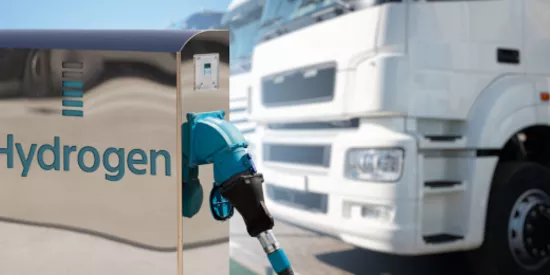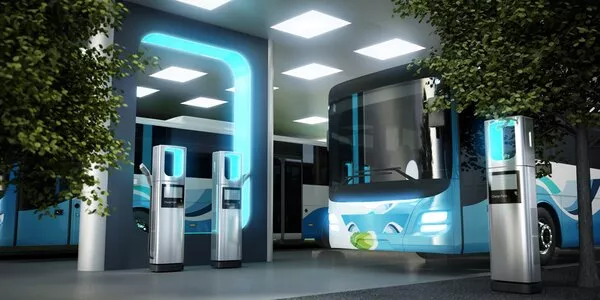
First Blue Bond in Asia: oceans can help save the planet
Blue bonds are dedicated to funding marine-related projects such as protecting ocean life, reducing pollution and building offshore windfarms
A frequent issuer of green, social and sustainability bonds, Bank of China launched on the market, with the support of Societe Generale, Asia’s first blue bond - a dual currency bond raising the equivalent of US$942 million toward protecting the oceans.
As sustainable investment gains momentum globally, asset managers have welcomed new kinds of instruments that allow them to deploy capital in line with Environmental, Social and Governance (ESG) principles. As with green bonds, capital raised from blue bonds is dedicated towards environmentally sustainable projects and contributes to the United Nations’ Sustainable Development Goals (SDGs). But financing from blue bonds is used specifically for marine-related projects such as protecting ocean life, reducing pollution and building offshore wind farms.
Bank of China will use the proceeds of the blue bond to fund 25 projects which will include a 2,987 megawatt increase in installed capacity for offshore wind power and 6.176 million cubic meters per day of additional sewage treatment capacity1.
Blue finance starts making waves
Global green bond issuance over the last decade has jumped more than fifty-fold from US$4.3 billion in 2010 to a record US$258.9 billion in 2019, according to the Climate Bonds Initiative 2. In addition to green bonds, other thematic bonds with social and sustainability labels have become increasingly popular. Asia’s first blue bond – the fourth globally – is a testimony that investors and issuers are looking to step up their ESG contributions.
Asia has a vast coastline of 62,800 kilometers (39,000 miles)3, highlighting the potential of the blue economy in the region. The continent is home to a number of archipelago nations (Philippines, Indonesia…) that depend heavily on the sea and its resources for various economic activities.
The World Bank defines the blue economy as the sustainable use of ocean resources for economic growth, improved livelihoods and jobs, and ocean ecosystem health 4. The UN Economic and Social Commission for Asia and the Pacific (ESCAP) also highlighted the need for further progress in the region in its 2020 report, especially on preserving marine and coastal ecosystems5 .
While climate change and human damage such as industrial fishing and the dumping of chemical and plastic waste have put the livelihoods of those depending on marine resources at risk, transactions like Bank of China’s inaugural blue bond reflect a growing awareness that the economic value of the oceans hinges on their good health.

A better and sustainable world as a guiding strategy
Societe Generale was a joint global coordinator for the US$500 million three-year tranche of the deal, which was combined with a RMB3 billion (US$442 million) two-year offshore renminbi offering by Bank of China’s Paris and Macau branches.
Recognized for its leadership in Sustainable and Positive Impact Finance, Societe Generale has executed more than 150 ESG bonds globally since 2013 and helped its clients in Asia Pacific raise over US$8bn through ESG-related bonds since 2019.
We were privileged to be a part of Bank of China’s pioneering transaction. We believe the blue bond format can be a compelling choice for many other issuers looking to finance lending portfolios or operations in the sustainable marine economy.
Head of Debt Capital Markets for Asia Pacific at Societe Generale
As a founding signatory of the Principles for Responsible Banking, Societe Generale has a strategic commitment to supporting clients’ sustainable and positive impact projects. In September 2019, the bank committed to further accelerate energy transition by promising to raise more than EUR120 billion by 2023, of which EUR100 billion in sustainable bond issuance and EUR 20 billion dedicated to the renewable energy sector through advisory and financing.6
As countries, corporates and institutions seek to build more balanced and sustainable economies, oceans cannot be forgotten – and nor can blue bonds.
1 https://www.ifre.com/story/2532280/boc-prints-asias-first-blue-bonds-l4n2gc1c0 2 https://www.climatebonds.net/resources/reports/green-bonds-global-state-market-2019 3 https://www.britannica.com/place/Asia 4 https://www.worldbank.org/en/news/infographic/2017/06/06/blue-economy 5 https://www.unescap.org/sites/default/files/publications/ESCAP_Asia_and_the_Pacific_SDG_Progress_Report_2020.pdf 6 https://www.societegenerale.com/en/news/newsroom/societe-generale-accelerates-its-commitments-favour-responsible-ecological-transition



